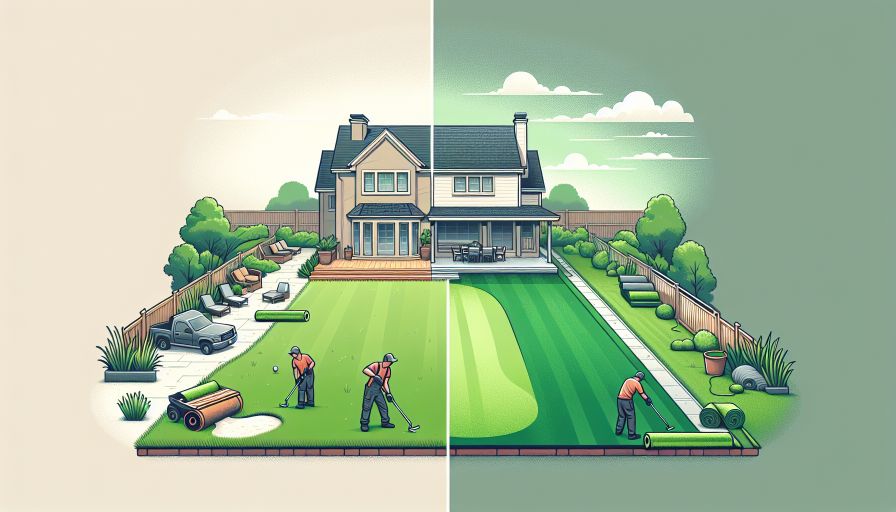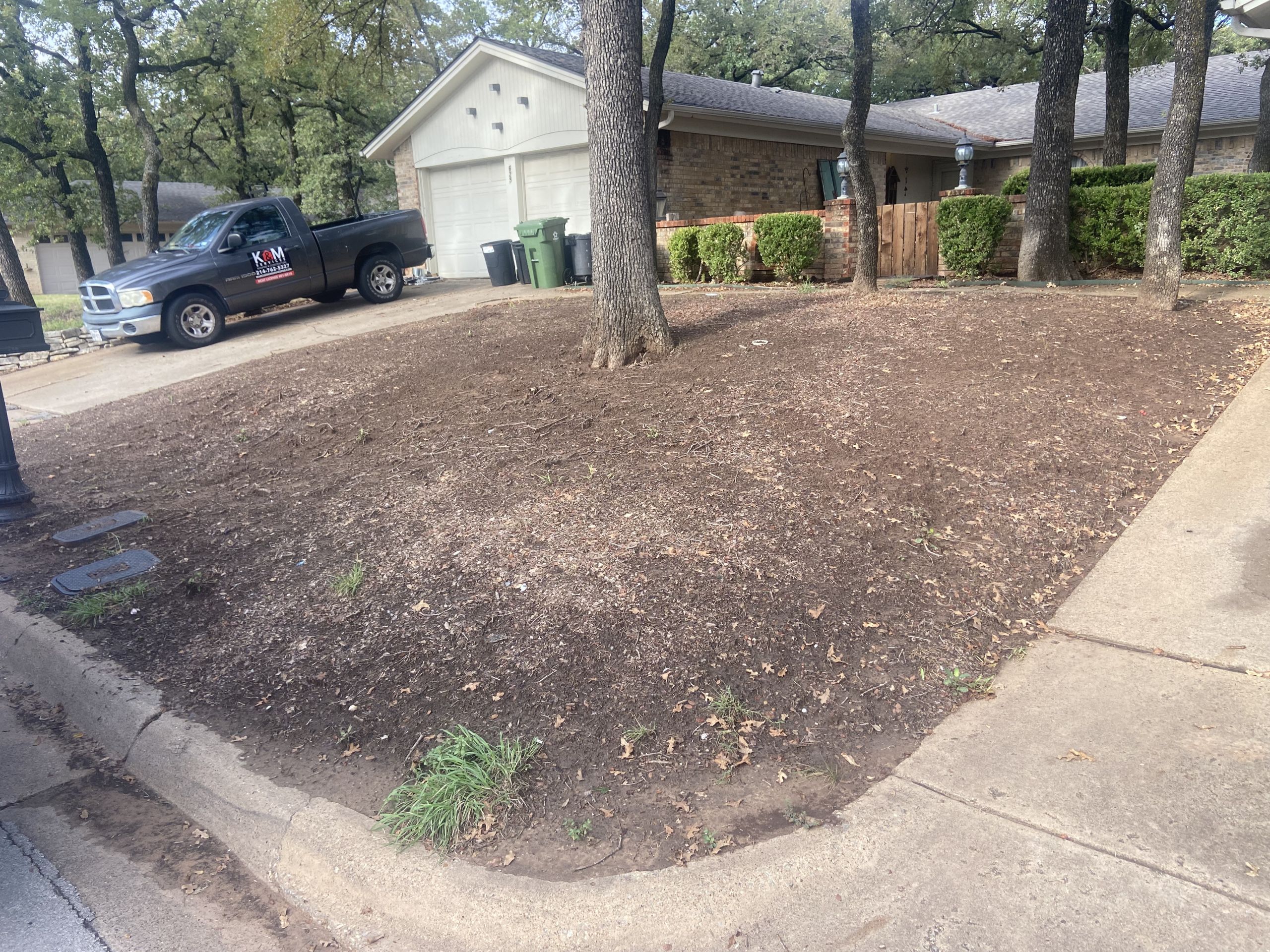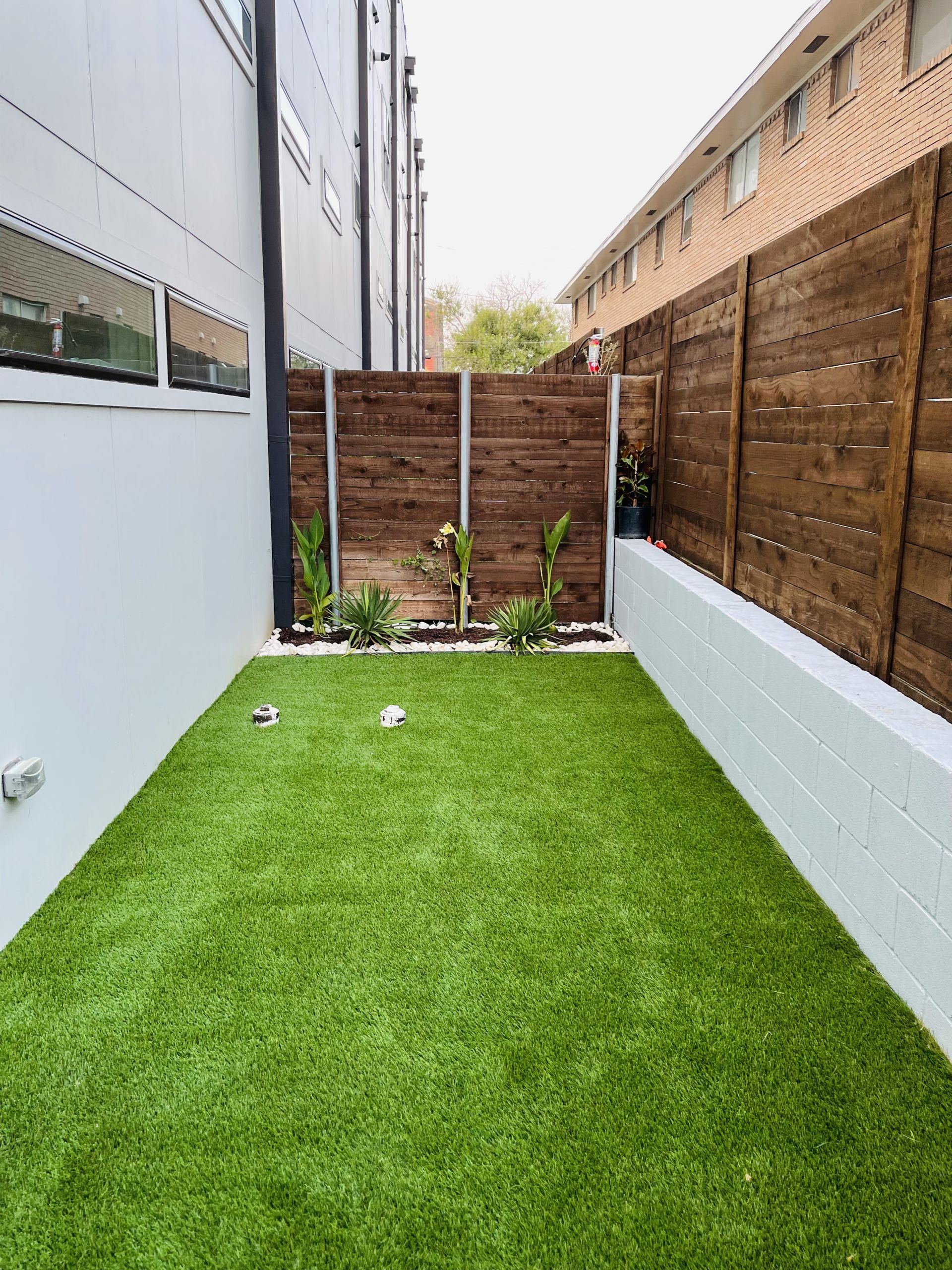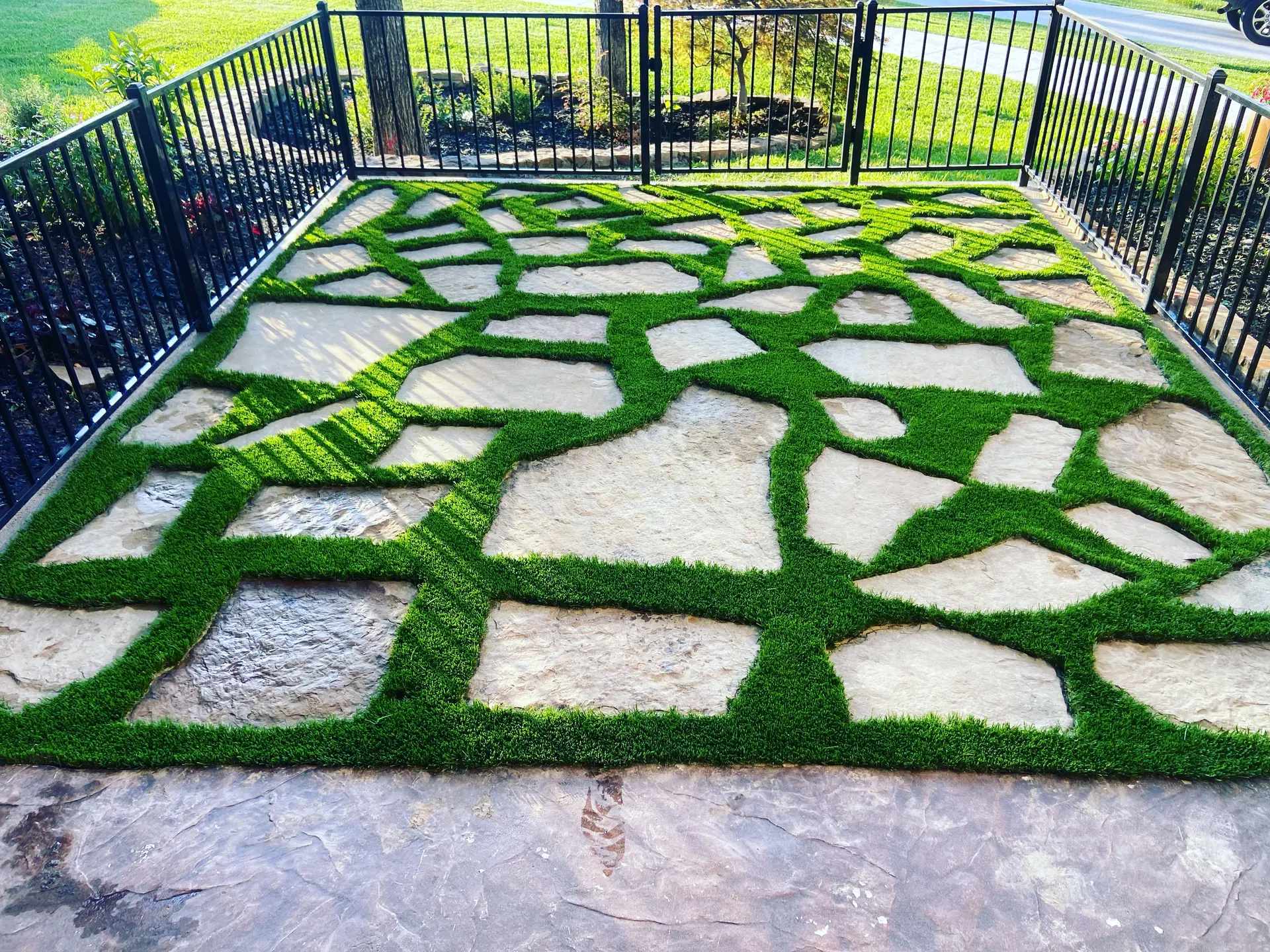
Introduction to Turf Installation and Its Benefits
Installing turf has become an increasingly popular solution for homeowners looking to enhance the aesthetic appeal and functionality of their residential spaces. Utilizing expert turf installation services for creating backyard putting greens or lush lawns offers numerous benefits, from environmental advantages to economic efficiency.
One of the primary benefits of turf installation is the minimal maintenance required compared to natural grass. Turf does not need to be watered, mowed, or fertilized, which reduces the time and effort homeowners need to invest in lawn care. This also leads to significant savings on water bills and lawn care products.
The environmental benefits of turf installation are also noteworthy. Reducing water usage helps conserve a vital resource, particularly in areas that experience droughts or have water restrictions. Additionally, the absence of chemical fertilizers and pesticides means fewer pollutants entering the soil and water systems.
Another key advantage is the durability and resilience of synthetic turf. Unlike natural grass, turf can withstand heavy foot traffic and adverse weather conditions without becoming patchy or muddy. This makes it an ideal choice for families with children and pets, or for those who frequently host outdoor gatherings.
The aesthetic appeal of turf is also a strong selling point. Expertly installed turf looks lush and green year-round, providing a vibrant, well-manicured appearance without the labor-intensive upkeep. This can significantly enhance the curb appeal and overall value of a property.
Let’s look at some key comparisons between natural grass and turf:
| Aspect | Natural Grass | Turf |
|---|---|---|
| Water Usage | High | Low |
| Maintenance | Regular mowing, fertilizing, and watering | Minimal |
| Durability | Prone to damage from foot traffic | High resilience |
| Aesthetic Longevity | Seasonal changes affect appearance | Year-round green |
In summary, the installation of turf by professionals offers a myriad of benefits that appeal to both practical and aesthetic considerations for homeowners. With its low maintenance, environmental benefits, durability, and consistent appearance, turf is a compelling alternative to traditional natural grass lawns.
Choosing the Right Turf for Your Backyard
Choosing the right turf for your backyard involves considering several factors to ensure you select a product that meets your specific needs and preferences. Different types of turf offer various benefits, and understanding these options can help you make an informed decision.
Natural Grass vs. Synthetic Turf
When deciding between natural grass and synthetic turf, it is essential to consider their characteristics:
- Natural Grass: Provides a natural look and feel; however, it requires consistent maintenance, including mowing, watering, and fertilization.
- Synthetic Turf: Offers a low-maintenance alternative with a realistic appearance; it does not need mowing or watering and is durable in various weather conditions.
Factors to Consider
Several key factors should guide your choice of turf:
- Climate: Select turf that is suitable for the climate in your area. For instance, warm-season grasses like Bermuda and Zoysia are ideal for hot climates, while cool-season grasses like Fescue and Bluegrass thrive in cooler regions.
- Usage: Consider the primary use of your backyard. If you intend to use the space for heavy activities, opt for more durable turf types.
- Maintenance: Evaluate how much time and effort you are willing to invest in maintaining your turf. Natural grass generally requires more maintenance than synthetic turf.
- Appearance: Consider the aesthetic appeal of different turf options. Choose a variety that complements your landscaping design.
Popular Turf Options
Several turf options are available, each with distinct advantages:
- Bermuda Grass: Known for its durability and ability to withstand high traffic, ideal for warm climates.
- Zoysia Grass: Offers a dense, lush appearance with good drought tolerance and low maintenance requirements, suitable for various climates.
- Fescue Grass: A cool-season grass, tolerant to shade, and ideal for cooler regions.
- Kentucky Bluegrass: Popular for its rich color and fine texture, best suited for cool climates.
- Synthetic Turf: Various products mimic the look and feel of natural grass, providing durability and low maintenance, ideal for areas with water restrictions or heavy use.
Conclusion
Choosing the right turf for your backyard depends on a balance of factors, including climate, intended use, maintenance willingness, and aesthetic preferences. By carefully evaluating these aspects, homeowners can select a turf option that enhances their residential space, whether it’s a backyard putting green or a lush lawn for relaxation and play.
Step-by-Step Turf Installation Process
Installing turf in your backyard follows a detailed and structured process to ensure both functionality and aesthetics. This section will guide you through each step of the installation process, from preparation to post-installation care.
1. Site Assessment and Preparation
The first step involves assessing the area where the turf will be installed. It’s crucial to evaluate the soil condition, the slope, and any existing vegetation that might need removal. Removing debris and weeds is essential to provide a clean slate.
- Conduct a soil test to determine nutrient levels and pH.
- Remove existing grass, weeds, and debris using a sod cutter or shovel.
- Level the ground if necessary, to ensure a smooth surface for the turf.
2. Measuring and Ordering Turf
Accurately measuring the area helps in ordering the correct amount of turf, minimizing waste and additional costs. Use a measuring tape to calculate the square footage.
- Measure the length and width of the area.
- Account for any irregular shapes by dividing the area into sections.
- Order a little extra turf to accommodate mistakes and adjustments.
3. Soil Preparation
Preparing the soil is critical for the turf to establish roots and thrive. The ground needs to be compact and leveled.
- Loosen the top 3-4 inches of soil using a garden fork or tiller.
- Amend the soil with a layer of organic matter or compost.
- Level and compact the soil using a roller to create a smooth surface.
4. Laying the Turf
Once the soil is ready, the turf can be laid. This step requires precision to avoid gaps and wrinkles.
- Start laying the turf along a straight edge, such as a driveway or fence.
- Lay the turf pieces closely to avoid gaps and press the edges together.
- Stagger the seams, similar to laying bricks, to create a seamless look.
- Trim the excess turf using a sharp knife.
5. Watering and Rolling
After installation, initial watering and rolling are necessary to help the turf settle.
- Water the new turf thoroughly to help it establish roots.
- Use a roller to press the sod firmly against the soil, eliminating air pockets.
6. Post-Installation Care
Proper care following installation ensures the longevity and health of the turf. Monitoring and maintaining the turf will foster a lush and green lawn.
- Water the turf daily for the first two weeks to encourage root growth.
- Avoid heavy traffic on the new turf for the initial month.
- Gradually reduce the watering frequency but ensure deep watering sessions.
Below is a table summarizing the key steps in the turf installation process:
| Step | Actions |
|---|---|
| Site Assessment and Preparation | Soil test, debris removal, ground leveling |
| Measuring and Ordering Turf | Measure area, order slightly extra turf |
| Soil Preparation | Loosen soil, amend soil, compact soil |
| Laying the Turf | Lay along straight edge, stagger seams, trim excess |
| Watering and Rolling | Thorough watering, use a roller |
| Post-Installation Care | Daily watering, avoid heavy traffic, deep watering |
Following these steps ensures a successful turf installation, leading to a beautiful and functional outdoor space.
Maintenance and Care for Long-Lasting Turf
Proper maintenance and care are crucial to ensuring the longevity and aesthetic appeal of your newly installed turf. By following recommended practices, you can keep your backyard putting greens and lush lawns in excellent condition for years to come.
1. Watering
Watering is a fundamental aspect of turf care. Newly installed turf requires consistent watering to establish deep roots. For the first two weeks, water the turf daily for about 20 minutes in the early morning or late afternoon to prevent evaporation. As the roots establish, reduce the frequency to 2-3 times per week but increase the duration of watering.
Ensure you adjust watering habits according to seasonal changes. During hotter months, more frequent watering may be necessary, whereas cooler months may require less.
2. Mowing
Regular mowing keeps your turf healthy and looking well-maintained. Set your mower to the appropriate height for your specific turf type; most lawns thrive at a height of 2.5 to 3 inches. Frequent mowing encourages dense, resilient turf and prevents weeds from establishing.
Only remove one-third of the grass blade length in a single mowing session to avoid stressing the lawn. Sharp mower blades ensure clean cuts, reducing the risk of disease.
3. Fertilizing
Balanced fertilization provides essential nutrients that promote vigorous growth and disease resistance. Apply a slow-release, granular fertilizer 2-4 times a year, following the manufacturer’s recommendations for your specific turf type.
Spring and fall are ideal times for fertilization, as the cooler weather and increased rainfall help nutrients penetrate the soil effectively.
4. Weed and Pest Control
Consistent monitoring for weeds and pests helps maintain the health of your turf. Use pre-emergent herbicides in early spring to prevent weed seeds from germinating. Hand-pulling or spot-treating with post-emergent herbicides can control existing weeds.
Integrated pest management (IPM) practices minimize pest damage while reducing reliance on chemical treatments. Encourage beneficial insects, use organic pesticides when possible, and maintain proper lawn care to reduce pest infestations.
5. Aeration
Aeration improves soil compaction, enhances root growth, and fosters a healthier lawn. Perform core aeration in the spring or fall when the soil is moist and the turf is actively growing. Aeration involves using a special machine to remove small plugs of soil, allowing air, water, and nutrients to reach the roots more effectively.
6. Overseeding
Overseeding helps maintain a thick, lush lawn by filling in bare spots and enhancing the turf’s overall density. Ideal times for overseeding are late summer to early fall. Ensure proper seed-to-soil contact by lightly mowing and aerating before spreading the seeds.
Water consistently after overseeding to support germination and early growth.
7. Seasonal Maintenance
Adapt your turf maintenance routine to seasonal conditions:
- Spring: Thatch removal, fertilization, and weed control.
- Summer: Increased watering, regular mowing, and pest monitoring.
- Fall: Overseeding, aeration, and final fertilization.
- Winter: Reduce foot traffic, clear debris, and protect from frost damage.
By adhering to these maintenance and care guidelines, you can ensure that your backyard putting greens and lush lawns remain vibrant, healthy, and enjoyable for years to come.
Innovative Designs and Applications for Residential Spaces
When it comes to transforming residential spaces with turf installation, innovative designs and applications can significantly elevate the aesthetic and functional value of your backyard. Incorporating a variety of creative solutions can meet diverse needs, from recreational activities such as backyard putting greens to achieving visually appealing and low-maintenance lush lawns.
Backyard Putting Greens
One of the most popular applications of turf installation in residential spaces is the creation of backyard putting greens. These installations offer a convenient and enjoyable way for golf enthusiasts to practice their putting skills at home.
- Custom Design: Backyard putting greens can be custom-designed to fit the specific dimensions and layout of your space, ensuring optimal use and functionality.
- High-Quality Materials: Using high-quality synthetic turf designed for golf can replicate the look and feel of natural greens, providing a realistic experience.
- Maintenance: Unlike natural grass, synthetic putting greens require minimal maintenance, freeing up time and reducing water usage.
- Features: Additional features like fringe grass, undulation, and multiple holes can be incorporated to enhance the challenge and enjoyment.
Residential Lawns
Synthetic turf is also an excellent choice for residential lawns. It creates a lush, green space that remains vibrant and healthy-looking all year round without the intensive care required by natural grass.
- Consistency: Artificial lawns maintain a uniform appearance regardless of weather conditions or foot traffic.
- Environmentally Friendly: Since synthetic turf eliminates the need for fertilizers, pesticides, and regular watering, it is a more sustainable and environmentally friendly option.
- Durability: High-quality synthetic turf is designed to withstand heavy use, making it ideal for homes with children and pets.
- Cost-Efficiency: While the initial installation cost may be higher compared to natural grass, the long-term savings on maintenance and water make synthetic lawns cost-effective over time.
Play Areas and Pet Zones
Artificial turf is also highly suitable for creating dedicated play areas for children and pet zones. These installations provide safe, clean, and durable surfaces that are designed to handle specific high-activity uses.
- Safety: Synthetic turf may come with shock-absorbing underlayers to help cushion falls, enhancing safety for children.
- Cleanliness: It is easy to clean and sanitize artificial turf, making it a hygienic option for pet areas.
- Pest-Free: Synthetic turf eliminates hiding spots for pests like ticks and fleas, creating a safer environment for both children and pets.
- Durability: Turf designed for high-traffic areas is built to withstand wear and tear from active play and pets.
Integrated Landscape Design
Innovative turf installation can be integrated into a comprehensive landscape design, combining various elements such as garden beds, pathways, and seating areas to create a harmonious outdoor space.
- Versatility: Synthetic turf can be seamlessly integrated with natural elements like trees, shrubs, and flowers, enhancing the overall aesthetic.
- Customization: Design options for synthetic turf are highly customizable, allowing homeowners to create unique patterns and configurations.
- Functional Zones: The landscape can be divided into functional zones, such as relaxation areas, dining spaces, and play zones, all unified by the consistent look of synthetic turf.
- Low Maintenance: Integrated landscape designs with synthetic turf reduce the overall maintenance required for the entire outdoor area.
By exploring these innovative designs and applications, homeowners can maximize the potential of their residential spaces, combining functionality, aesthetic appeal, and ease of maintenance through expert turf installation services.
Case Studies and Success Stories
To illustrate the transformative impact of expert turf installation services, various real-world case studies and success stories highlight the practical benefits and aesthetic enhancements that homeowners have experienced. These examples shed light on how professional services can elevate residential spaces, specifically focusing on backyard putting greens and lush lawns.
One notable case is the McCulloch family from Dallas, Texas. They opted for a backyard putting green professionally installed by a local turf specialist. Before the installation, their backyard was underutilized and lacked aesthetic appeal. Post-installation, the space not only served as an inviting recreational area but also significantly increased the property’s market value. It became a focal point for family gatherings and social events, demonstrating the multi-functional use of such installations.
Another success story comes from the Williams residence in Southern California. The family faced issues with uneven terrain and poor soil quality, which hampered their lawn’s growth. By enlisting the help of experts, they switched to synthetic turf specifically designed for drought-prone areas. This decision resulted in a lush, evergreen lawn that remained visually appealing year-round and reduced water consumption by up to 70% compared to natural grass.
In New York, the Johnson family transformed their small urban backyard into a serene garden oasis. With limited space, a blend of synthetic grass and natural landscaping was deployed. The installation included intricate turf patterns and integrated pathways, proving that even compact areas could be transformed into beautiful, functional outdoor living spaces. The new design provided a green retreat in the heart of the city, enhancing both the aesthetic and functional aspects of their home.
The Wilson family from Phoenix, Arizona, faced challenges due to extreme temperatures that made maintaining a natural lawn difficult. They invested in high-quality, heat-resistant artificial turf. As a result, they enjoyed a green, vibrant lawn throughout the year without the extensive upkeep and high water bills previously incurred. This case underlines the importance of selecting the right type of turf for local climate conditions.
Success stories such as these emphasize how expert turf installation can cater to various needs, from enhancing recreational space with backyard putting greens to creating sustainable and low-maintenance lush lawns. By addressing specific challenges and tailoring solutions to individual requirements, professional services can significantly upgrade residential outdoor spaces, making them more functional, visually pleasing, and environmentally friendly.


